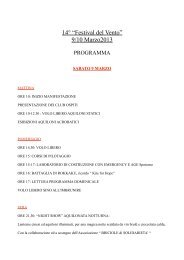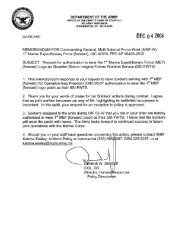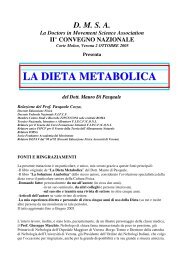Science vs. religion : what scientists really think - File PDF
Science vs. religion : what scientists really think - File PDF
Science vs. religion : what scientists really think - File PDF
Create successful ePaper yourself
Turn your PDF publications into a flip-book with our unique Google optimized e-Paper software.
Spiritual Entrepreneurs 53give this answer. About 32 percent of <strong>scientists</strong> consider themselves slightlyspiritual, compared to 21 percent of the general population. 7My research supports these statistics. Nearly 60 percent of <strong>scientists</strong> I intervieweddisplayed a spirituality that scholars might call “thin.” 8 If we <strong>think</strong> aboutspirituality as a continuum of relevance, there would be many <strong>scientists</strong> on oneend, whose spirituality seems to be lacking in content, or an accompanyingsense of responsibility. Thin spirituality is epitomized by a young nurse, Sheila,who was interviewed by sociologist Robert Bellah. In his chapter on <strong>religion</strong> inHabits of the Heart , Bellah talks about Sheila and her fully individualized formof spirituality; Sheila “has received a good deal of therapy and describes herfaith as ‘Sheilaism.’” He goes on to say, “This suggests the logical possibility ofmore than 235 million American <strong>religion</strong>s, one for each of us”:“I believe in God,” Sheila says. “I am not a religious fanatic. I can’t remember thelast time I went to church. My faith has carried me a long way. It’s Sheilaism. Justmy own little voice.” Sheila’s faith has some tenets beyond belief in God, thoughnot many. In defining <strong>what</strong> she calls “my own Sheilaism,” she said: “It’s just tryto love yourself and be gentle with yourself. You know, I guess, take care of eachother. I <strong>think</strong> God would want us to take care of each other.Sheila’s spirituality is so disconnected from the tradition of a community thatshe can develop her own faith and even name it after herself.Although Sheila might be an extreme example of thin spirituality, a portionof the <strong>scientists</strong> I talked with did express elements of this less reflective, dilutedform of religious practice. Indeed, some of the <strong>scientists</strong> have spiritual practicesso thin that they are almost nonexistent, only described as “spiritual post hoc,”after the interviewer introduced the concept of spirituality. And some of theirspiritual experiences could be better described as good feelings rather thanepiphanies. Consider one memorable response from a sociologist 9 at a universityin the midwestern United States. He is in his mid thirties and was raisedwithout any religious tradition. He describes himself as an agnostic who isloosely part of a Unitarian group. When I asked this sociologist how he woulddefine spirituality, he explained that it had to do with “relationships with therest of the world, both people but also nature and other animals of the planet.It has to do with my place in the world and being aware of that and actingaccordingly.” Although it seemed from his definition that he had an idea of<strong>what</strong> it might mean to be spiritual, when I pressed him to describe a spiritualpractice that he had engaged in, he talked about attending baseball games. Atfirst I thought that my respondent—as one sociologist might chide another—was subtly telling me not to take my study too seriously. But as I listened, he
















